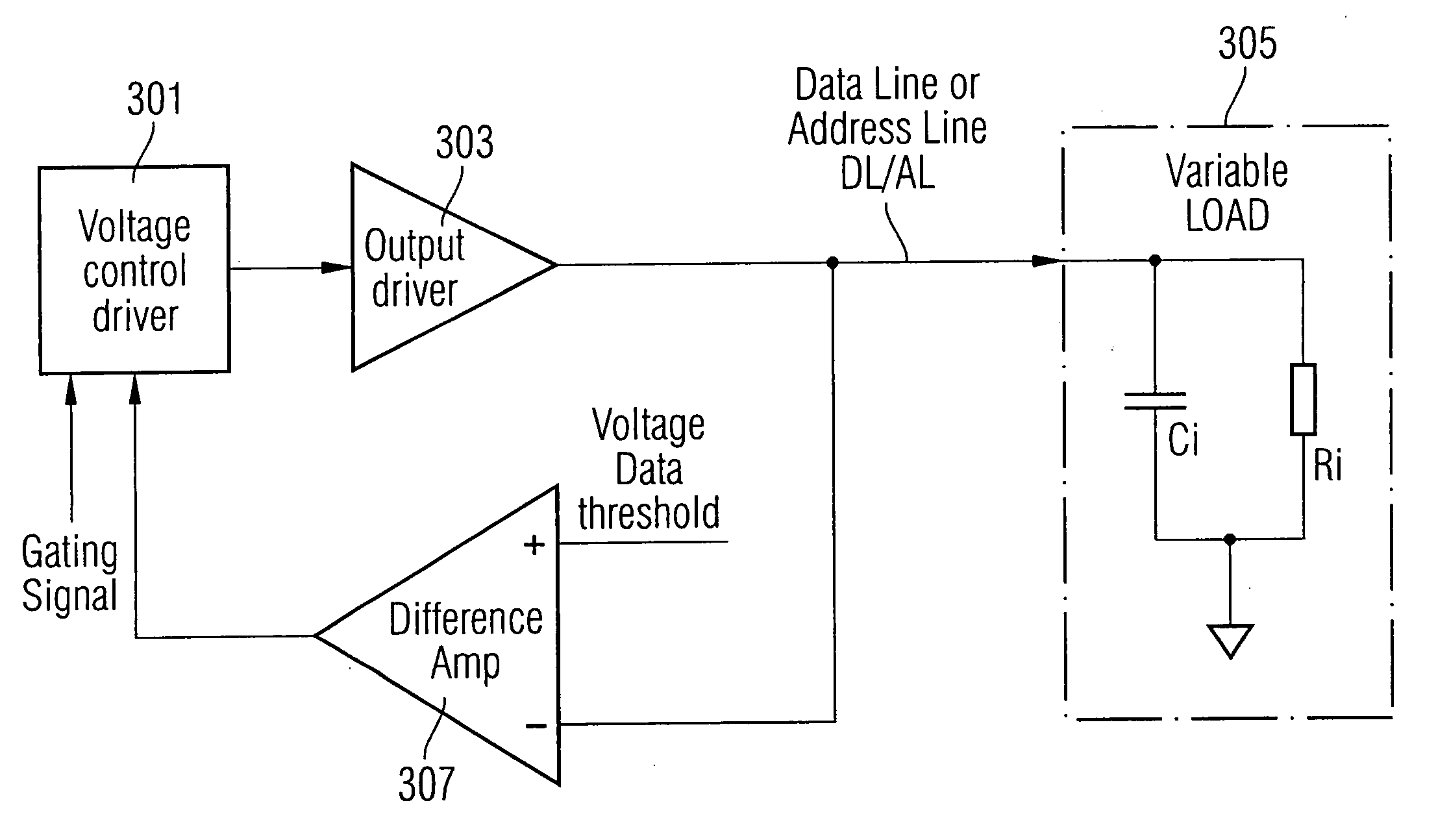Control of signal line voltages on a bus
- Summary
- Abstract
- Description
- Claims
- Application Information
AI Technical Summary
Benefits of technology
Problems solved by technology
Method used
Image
Examples
Embodiment Construction
[0034] An exemplary embodiment of the invention will now be described with reference to FIG. 3 of the accompanying drawings, which is a diagram showing circuitry which can be used to monitor each data line and address line.
[0035] The circuitry includes a voltage control driver 301 connected to an output driver 303. The output driver 303 is connected to the particular data or address line to be monitored (termed DL / AL) and that data or address line is connected to a load 305. The load is a variable load since it depends on the number of peripheral chips sharing that data or address line. The voltage from the output driver 303 is compared with a threshold voltage in a differential amplifier 307. The output from the differential amplifier is input back into the voltage control driver 301. The voltage control driver 301 also receives a gating signal such as a write (WR) signal.
[0036] The circuitry can be used on each data and address line on the bus between an SoC (or other control ch...
PUM
 Login to View More
Login to View More Abstract
Description
Claims
Application Information
 Login to View More
Login to View More - R&D
- Intellectual Property
- Life Sciences
- Materials
- Tech Scout
- Unparalleled Data Quality
- Higher Quality Content
- 60% Fewer Hallucinations
Browse by: Latest US Patents, China's latest patents, Technical Efficacy Thesaurus, Application Domain, Technology Topic, Popular Technical Reports.
© 2025 PatSnap. All rights reserved.Legal|Privacy policy|Modern Slavery Act Transparency Statement|Sitemap|About US| Contact US: help@patsnap.com



